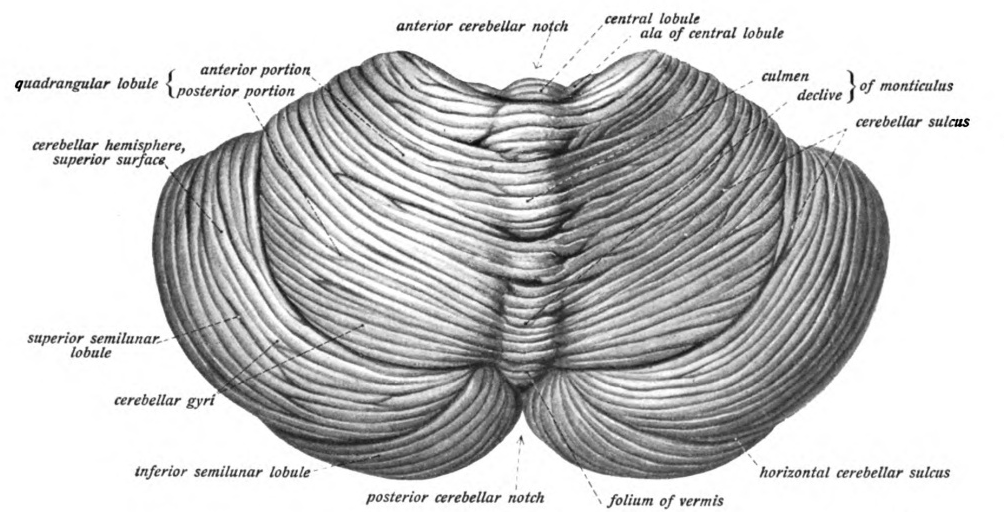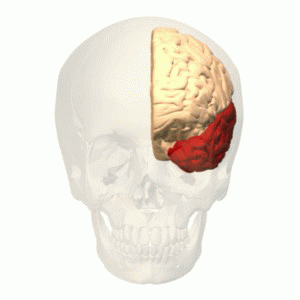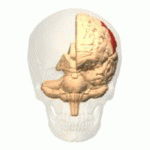|
Britain's Best Brain
''Britain's Best Brain'' is a British game show that aired on Channel 5 from 28 October to 16 December 2009 and hosted by Jamie Theakston and Zoe Ball. It saw ordinary members of the public undertake various tasks, all scientifically designed to test different parts of the brain. The show ran every Wednesday and was aired from 28 October to 16 December 2009. The winner, crowned 'Britain's Best Brain 2009', was Matt Clancy, a 29-year-old marketing consultant from London. Rounds * Calculation: designed to test the parietal lobe. * Memory: designed to test the temporal lobe. * Recognition: designed to test the occipital lobe. * Co-ordination: designed to test the cerebellum. * Risk: designed to test the frontal lobe The frontal lobe is the largest of the four major lobes of the brain in mammals, and is located at the front of each cerebral hemisphere (in front of the parietal lobe and the temporal lobe). It is parted from the parietal lobe by a groove b .... Qualifying lea ... [...More Info...] [...Related Items...] OR: [Wikipedia] [Google] [Baidu] |
Jamie Theakston
James Paul Theakston (born 21 December 1970) is an English television presenter, producer, and actor. He co-presented the former Saturday morning BBC One children's show '' Live & Kicking'', alongside Zoe Ball between 1996 and 1999. He co-hosted BBC One's former music programme ''Top of the Pops'' between 1998 and 2003. He currently co-hosts the national breakfast show with Amanda Holden on Heart Radio. He narrated the BBC documentary series '' Traffic Cops'' from 2003 and 2015, and again on Channel 5 from 2016 onwards. He has hosted several television programmes for the BBC, ITV, Channel 4 and Channel 5. He has won a BAFTA for Live & Kicking and numerous awards for his radio work including a SONY GOLD, 3 Silver Awards and 4 Bronze awards, 2 ARQIVA Awards, 3 TRIC awards and 2 New York Radio Festival Awards. Education He joined the National Youth Theatre at the age of 13, where he appeared in plays including '' Murder in the Cathedral'' and '' Marat/Sade'' alongside contem ... [...More Info...] [...Related Items...] OR: [Wikipedia] [Google] [Baidu] |
Cerebellum
The cerebellum (Latin for "little brain") is a major feature of the hindbrain of all vertebrates. Although usually smaller than the cerebrum, in some animals such as the mormyrid fishes it may be as large as or even larger. In humans, the cerebellum plays an important role in motor control. It may also be involved in some cognitive functions such as attention and language as well as emotional control such as regulating fear and pleasure responses, but its movement-related functions are the most solidly established. The human cerebellum does not initiate movement, but contributes to coordination, precision, and accurate timing: it receives input from sensory systems of the spinal cord and from other parts of the brain, and integrates these inputs to fine-tune motor activity. Cerebellar damage produces disorders in fine movement, equilibrium, posture, and motor learning in humans. Anatomically, the human cerebellum has the appearance of a separate structure attached to th ... [...More Info...] [...Related Items...] OR: [Wikipedia] [Google] [Baidu] |
English-language Television Shows
English is a West Germanic language of the Indo-European language family, with its earliest forms spoken by the inhabitants of early medieval England. It is named after the Angles, one of the ancient Germanic peoples that migrated to the island of Great Britain. Existing on a dialect continuum with Scots, and then closest related to the Low Saxon and Frisian languages, English is genealogically West Germanic. However, its vocabulary is also distinctively influenced by dialects of France (about 29% of Modern English words) and Latin (also about 29%), plus some grammar and a small amount of core vocabulary influenced by Old Norse (a North Germanic language). Speakers of English are called Anglophones. The earliest forms of English, collectively known as Old English, evolved from a group of West Germanic ( Ingvaeonic) dialects brought to Great Britain by Anglo-Saxon settlers in the 5th century and further mutated by Norse-speaking Viking settlers starting in ... [...More Info...] [...Related Items...] OR: [Wikipedia] [Google] [Baidu] |
Channel 5 (British TV Channel) Original Programming
Channel 5 may refer to: Americas * Canal 5 (Mexico), a Mexican television network owned by Televisa ** XHGC-TDT, a television station in Mexico City, flagship of the Canal 5 network * Canal 5 Noticias, a news channel in Buenos Aires, Argentina * Canal 5 (Uruguay), a government-owned Uruguayan television network * Tonis (Canada), a former Ukrainian-language digital cable specialty television channel * Telefe Rosario, Argentine television station which broadcasts from the city of Rosario * Great Belize Television, Belize television station, known as "Channel 5", founded in 1991 and broadcasting from Belize City * Panamericana Televisión a Peruvian free-to-air television channel Broadcasting on Channel 5 in Lima, Peru * Paravisión, a Paraguayan television network broadcasting on Channel 5 in Asunción * TV+ (Chile), formerly UCV Televisión, a chilean free-to-air television channel broadcasting on Channel 5 in Santiago de Chile * WNYW-TV Channel 5, a Fox-affiliated television ... [...More Info...] [...Related Items...] OR: [Wikipedia] [Google] [Baidu] |
2000s British Game Shows
S, or s, is the nineteenth letter in the Latin alphabet, used in the modern English alphabet, the alphabets of other western European languages and others worldwide. Its name in English is ''ess'' (pronounced ), plural ''esses''. History Origin Northwest Semitic šîn represented a voiceless postalveolar fricative (as in 'ip'). It originated most likely as a pictogram of a tooth () and represented the phoneme via the acrophonic principle. Ancient Greek did not have a phoneme, so the derived Greek letter sigma () came to represent the voiceless alveolar sibilant . While the letter shape Σ continues Phoenician ''šîn'', its name ''sigma'' is taken from the letter ''samekh'', while the shape and position of ''samekh'' but name of ''šîn'' is continued in the '' xi''. Within Greek, the name of ''sigma'' was influenced by its association with the Greek word (earlier ) "to hiss". The original name of the letter "sigma" may have been ''san'', but due to the complic ... [...More Info...] [...Related Items...] OR: [Wikipedia] [Google] [Baidu] |
2009 British Television Series Endings
9 (nine) is the natural number following and preceding . Evolution of the Arabic digit In the beginning, various Indians wrote a digit 9 similar in shape to the modern closing question mark without the bottom dot. The Kshatrapa, Andhra and Gupta started curving the bottom vertical line coming up with a -look-alike. The Nagari continued the bottom stroke to make a circle and enclose the 3-look-alike, in much the same way that the sign @ encircles a lowercase ''a''. As time went on, the enclosing circle became bigger and its line continued beyond the circle downwards, as the 3-look-alike became smaller. Soon, all that was left of the 3-look-alike was a squiggle. The Arabs simply connected that squiggle to the downward stroke at the middle and subsequent European change was purely cosmetic. While the shape of the glyph for the digit 9 has an ascender in most modern typefaces, in typefaces with text figures the character usually has a descender, as, for example, in . The mo ... [...More Info...] [...Related Items...] OR: [Wikipedia] [Google] [Baidu] |
Frontal Lobe
The frontal lobe is the largest of the four major lobes of the brain in mammals, and is located at the front of each cerebral hemisphere (in front of the parietal lobe and the temporal lobe). It is parted from the parietal lobe by a groove between tissues called the central sulcus and from the temporal lobe by a deeper groove called the lateral sulcus (Sylvian fissure). The most anterior rounded part of the frontal lobe (though not well-defined) is known as the frontal pole, one of the three poles of the cerebrum. The frontal lobe is covered by the frontal cortex. The frontal cortex includes the premotor cortex, and the primary motor cortex – parts of the motor cortex. The front part of the frontal cortex is covered by the prefrontal cortex. There are four principal gyri in the frontal lobe. The precentral gyrus is directly anterior to the central sulcus, running parallel to it and contains the primary motor cortex, which controls voluntary movements of specific body ... [...More Info...] [...Related Items...] OR: [Wikipedia] [Google] [Baidu] |
Occipital Lobe
The occipital lobe is one of the four major lobes of the cerebral cortex in the brain of mammals. The name derives from its position at the back of the head, from the Latin ''ob'', "behind", and ''caput'', "head". The occipital lobe is the visual processing center of the mammalian brain containing most of the anatomical region of the visual cortex. The primary visual cortex is Brodmann area 17, commonly called V1 (visual one). Human V1 is located on the medial side of the occipital lobe within the calcarine sulcus; the full extent of V1 often continues onto the occipital pole. V1 is often also called striate cortex because it can be identified by a large stripe of myelin, the Stria of Gennari. Visually driven regions outside V1 are called extrastriate cortex. There are many extrastriate regions, and these are specialized for different visual tasks, such as visuospatial processing, color differentiation, and motion perception. Bilateral lesions of the occipital lobe can l ... [...More Info...] [...Related Items...] OR: [Wikipedia] [Google] [Baidu] |
Zoe Ball
Zoe Louise Ball (born 23 November 1970) is a British radio and television presenter. She was the first female host of both '' Radio 1 Breakfast'' and '' The Radio 2 Breakfast Show'' for the BBC, and presented the 1990s children's show '' Live & Kicking'', alongside Jamie Theakston from 1996–1999. Ball was a contestant in the third series of ''Strictly Come Dancing''. Following this, in 2011 she replaced Claudia Winkleman as host of the BBC Two spin-off show '' Strictly Come Dancing: It Takes Two'' until her departure in 2021. Ball also hosted the '' Strictly Come Dancing Live Tour'' in 2011 and 2015. In 2018, Ball was announced as the new '' The Radio 2 Breakfast Show'' host and took over from Chris Evans in January 2019. Early life Zoe Ball was born in Blackpool, Lancashire, and grew up in Farnham Common, Buckinghamshire. She is the daughter of the children's TV presenter Johnny Ball and his wife Julia ''née'' Anderson. The couple divorced when Zoe was two. Ball was ... [...More Info...] [...Related Items...] OR: [Wikipedia] [Google] [Baidu] |
Temporal Lobe
The temporal lobe is one of the four major lobes of the cerebral cortex in the brain of mammals. The temporal lobe is located beneath the lateral fissure on both cerebral hemispheres of the mammalian brain. The temporal lobe is involved in processing sensory input into derived meanings for the appropriate retention of visual memory, language comprehension, and emotion association. ''Temporal'' refers to the head's temples. Structure The temporal lobe consists of structures that are vital for declarative or long-term memory. Declarative (denotative) or explicit memory is conscious memory divided into semantic memory (facts) and episodic memory (events). Medial temporal lobe structures that are critical for long-term memory include the hippocampus, along with the surrounding hippocampal region consisting of the perirhinal, parahippocampal, and entorhinal neocortical regions. The hippocampus is critical for memory formation, and the surrounding medial temporal cortex is curre ... [...More Info...] [...Related Items...] OR: [Wikipedia] [Google] [Baidu] |
Parietal Lobe
The parietal lobe is one of the four major lobes of the cerebral cortex in the brain of mammals. The parietal lobe is positioned above the temporal lobe and behind the frontal lobe and central sulcus. The parietal lobe integrates sensory information among various modalities, including spatial sense and navigation (proprioception), the main sensory receptive area for the sense of touch in the somatosensory cortex which is just posterior to the central sulcus in the postcentral gyrus, and the dorsal stream of the visual system. The major sensory inputs from the skin (touch, temperature, and pain receptors), relay through the thalamus to the parietal lobe. Several areas of the parietal lobe are important in language processing. The somatosensory cortex can be illustrated as a distorted figure – the cortical homunculus (Latin: "little man") in which the body parts are rendered according to how much of the somatosensory cortex is devoted to them. The superior parietal lobule an ... [...More Info...] [...Related Items...] OR: [Wikipedia] [Google] [Baidu] |




